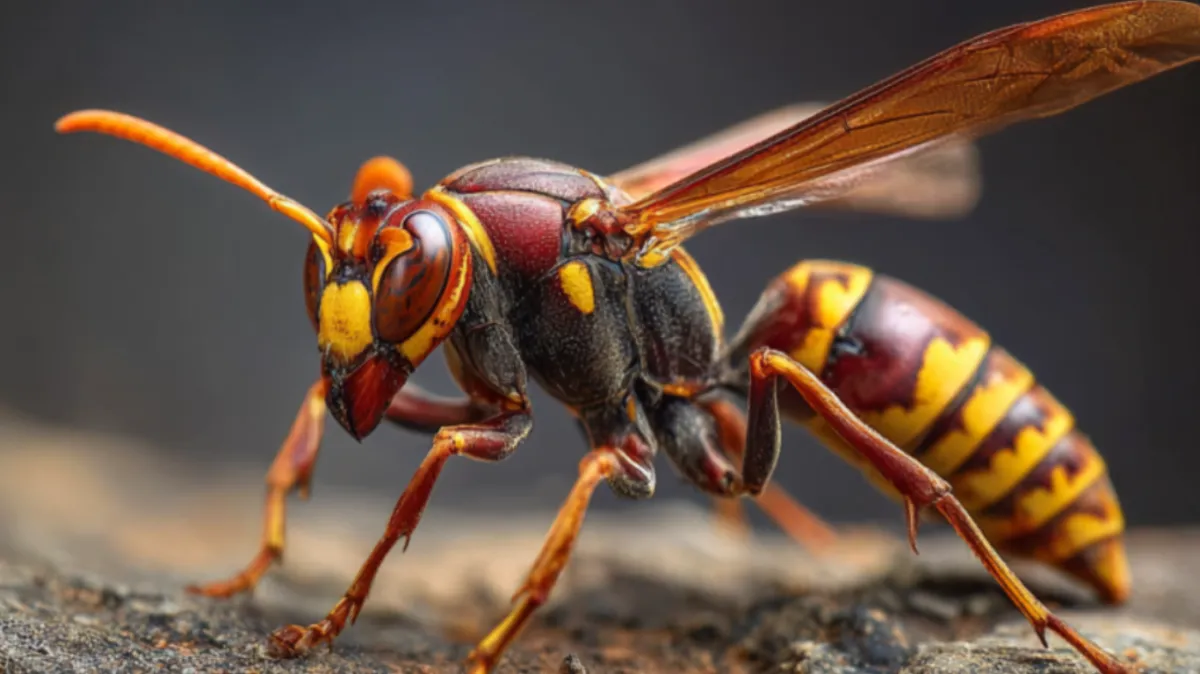
Wasps vs. Hornets: How to Spot the Difference and Stay Safe
Why August Is Peak Season for Stingers
August marks the height of summer—and the peak of wasp and hornet activity. These buzzing insects thrive in warm weather and take full advantage of the season’s environmental conditions. Understanding why they become more aggressive and visible now can help you stay proactive in preventing stings and infestations.
Here are the main reasons why August is a critical time for wasps and hornets:
1. Mature Colonies Reach Maximum Size
By late summer, wasp and hornet colonies are fully established and may house hundreds to thousands of individuals.
With more mouths to feed, foraging activity increases dramatically—bringing them closer to human activity.
Colonies also become more territorial and defensive, increasing the risk of aggressive encounters near nests.
2. Food Scarcity Triggers Aggression
Early in the season, wasps feed primarily on insects and protein to support larval growth.
In August, larvae mature into adult workers, reducing the protein demand and shifting their diet to sugary substances like fruit, soda, and sweets.
This transition drives wasps to seek out human food sources, making picnics, garbage bins, and outdoor dining hotspots for stinger activity.
3. Reproductive Season Begins
August is when new queens and male drones are produced in the colony.
This reproductive phase prompts wasps and hornets to guard their nests more aggressively, since the survival of future generations is at stake.
As a result, nests become more dangerous to approach—even unknowingly.
Wasp vs. Hornet: What’s the Difference?
Although many people use the terms interchangeably, wasps and hornets are two distinct types of stinging insects. Being able to tell them apart isn’t just interesting—it’s important for determining the level of risk and the best way to respond. Here's how to identify each species based on key characteristics:
1. Appearance: Size, Color, and Shape Matter
Wasps
Slender, narrow-waisted bodies with a sleek appearance.
Bold yellow-and-black coloration that stands out.
Generally smaller in size, measuring about 1.2–2 cm (½–¾ inch).
Examples include the yellowjacket and paper wasp.
Hornets
Larger and more robust than typical wasps.
More subdued coloring, often with reddish-brown heads and black-and-yellow banded abdomens.
European hornets, common in parts of Canada, can grow over 2.5 cm (1 inch) in length.
Their stockier bodies and less vivid markings help differentiate them from wasps at a glance.
2. Nesting Habits: Where You’ll Find Them
Wasps
Build small to medium-sized nests with a papery gray texture, resembling paper mâché.
Prefer sheltered, concealed spots such as:
Under eaves and roof overhangs
In sheds or garages
Inside wall voids or under deck railings
These nests often start small but can expand quickly.
Hornets
Construct large, football- or teardrop-shaped nests that can grow as big as a basketball.
Favor exposed, elevated locations like:
Tree branches or dense shrubbery
Rooflines, attics, and soffit
Light poles or exterior building corners
A hornet nest may house thousands of individuals, making early detection critical.
3. Aggression and Behavior: How They React to Threats
Wasps
Easily provoked and quick to sting when disturbed.
Drawn to sugary foods, meat, fruit, and open garbage—making them frequent visitors to:
Outdoor picnics and patios
Barbecue grills and drink stations
Trash cans and compost bins
Can sting multiple times and are especially active in late summer.
Hornets
More aggressive than common wasps, particularly when defending their nests.
Known to swarm intruders if they perceive a threat—even from several meters away.
Their sting is more painful due to a higher concentration of venom and the sheer force behind their larger stingers.
Like wasps, hornets do not die after stinging, meaning they can sting repeatedly.
How to Stay Safe: Smart Steps to Prevent Stings and Infestations
Wasps and hornets aren’t just a nuisance—they can pose serious health risks, especially to individuals with allergies. Their stings can be painful, dangerous, and sometimes even life-threatening. That's why it’s essential to stay proactive, especially during peak activity in August. Here’s a step-by-step guide to keeping your property—and your loved ones—safe from stinging insects:
1. Eliminate Food and Waste Sources
Stinging insects are drawn to sugary substances, protein-rich foods, and garbage. Minimizing their access to food discourages them from hanging around your property.
✅ Cover all food and drinks when eating outdoors, especially sweet beverages and grilled meats.
✅ Clean up spills immediately, particularly sugary sauces or soft drinks.
✅ Use tightly sealed garbage bins with secure lids to prevent access to food waste.
✅ Rinse all recyclables (cans, bottles, etc.) before placing them in bins—residual sugars can attract foraging wasps.
✅ Feed pets indoors, or remove uneaten pet food promptly.
2. Seal Entry Points into Your Home
Prevent wasps and hornets from building nests inside walls, attics, or basements by securing your home’s exterior.
✅ Repair torn window and door screens to prevent wasps from flying indoors.
✅ Seal cracks and crevices in exterior siding, soffits, fascia boards, and foundation.
✅ Apply caulk or foam sealant around utility entry points such as:
Vent pipes
Cable outlets
Dryer or bathroom exhaust vents
3. Inspect Your Property Regularly
Early detection of a nest gives you a better chance at safe removal—before colonies grow and become aggressive.
✅ Perform monthly visual inspections around:
Eaves and overhangs
Outdoor light fixtures
Garages and sheds
Decks, patios, and fence lines
Bushes, shrubs, and low-hanging tree branches
August is no time to take chances with wasps and hornets. A single sting can ruin a backyard party—or worse, lead to medical emergencies. With Axon Extermination on your side, you’ll get fast, effective service from experienced pros who know how to handle aggressive pests safely.
Book your wasp or hornet inspection today and enjoy the rest of summer without the buzz.